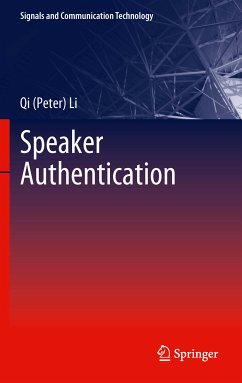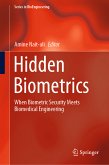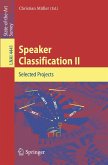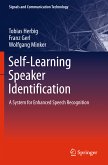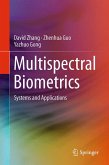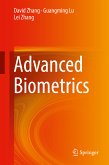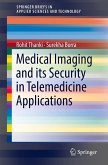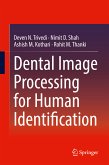This book focuses on use of voice as a biometric measure for personal authentication. In particular, "Speaker Recognition" covers two approaches in speaker authentication: speaker verification (SV) and verbal information verification (VIV). The SV approach attempts to verify a speaker's identity based on his/her voice characteristics while the VIV approach validates a speaker's identity through verification of the content of his/her utterance(s). SV and VIV can be combined for new applications. This is still a new research topic with significant potential applications. The book provides with a broad overview of the recent advances in speaker authentication while giving enough attention to advanced and useful algorithms and techniques. It also provides a step by step introduction to the current state of the speaker authentication technology, from the fundamental concepts to advanced algorithms. We will also present major design methodologies and share our experience in developing real and successful speaker authentication systems. Advanced and useful topics and algorithms are selected with real design examples and evaluation results. Special attention is given to the topics related to improving overall system robustness and performances, such as robust endpoint detection, fast discriminative training theory and algorithms, detection-based decoding, sequential authentication, etc. For example, the sequential authentication was developed based on statistical sequential testing theory. By adding enough subtests, a speaker authentication system can achieve any accuracy requirement. The procedure of designing the sequential authentication will be presented. For any presented technique, we will provide experimental results to validate the usefulness. We will also highlight the important developments in academia, government, and industry, and outline a few open issues. As the methodologies developed in speaker authentication span several diverse fields, the tutorialbook provides an introductory forum for a broad spectrum of researchers and developers from different areas to acquire the knowledge and skills to engage in the interdisciplinary fields of user authentication, biometrics, speech and speaker recognition, multimedia, and dynamic pattern recognition.
Dieser Download kann aus rechtlichen Gründen nur mit Rechnungsadresse in A, B, BG, CY, CZ, D, DK, EW, E, FIN, F, GR, HR, H, IRL, I, LT, L, LR, M, NL, PL, P, R, S, SLO, SK ausgeliefert werden.

